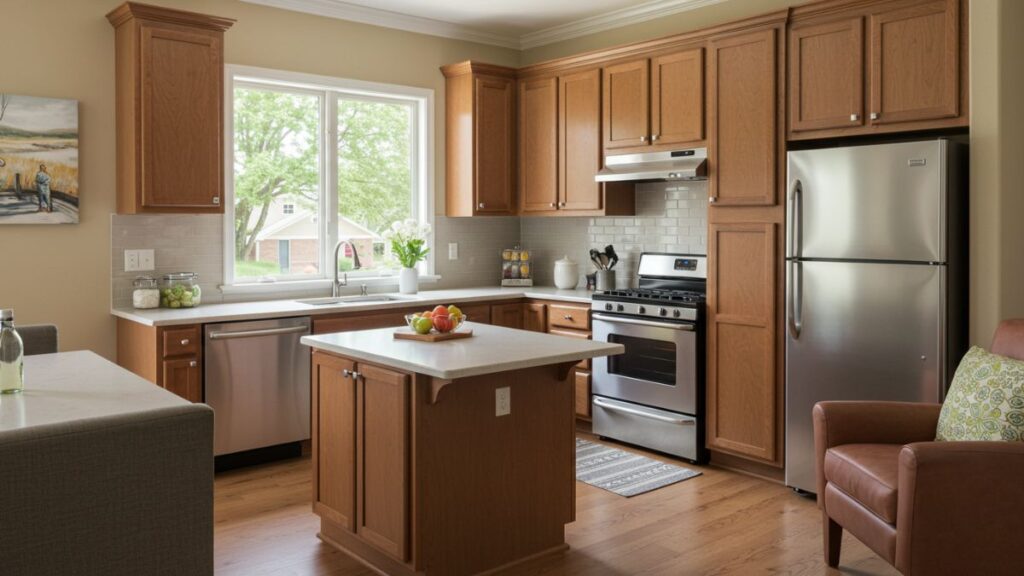As people age, their homes must evolve to meet changing needs, providing a safe, comfortable, and functional space for everyday living. Aging in place—remaining in your own home as you grow older—is a goal for many, but achieving it requires thoughtful design changes to make the home accessible, secure, and adaptable. By incorporating smart remodeling strategies, you can create a space that supports independence and enhances quality of life. Here are essential design tips to consider.
1. Focus on Accessibility
Accessibility should be a top priority in any aging-in-place remodel. A well-designed space reduces the risk of falls and makes daily tasks more manageable by renovation companies New York.
- Wider doorways and hallways: Ensure doorways are at least 36 inches wide to accommodate wheelchairs or walkers.
- Step-free entryways: Install ramps or eliminate steps at entrances for easy access.
- Lever-style handles: Replace traditional doorknobs and faucet handles with lever-style Smart Design Tips for easier grip.
- Pro Tip: Choose flooring materials with non-slip surfaces to prevent falls, especially in high-traffic areas.
2. Create a Barrier-Free Bathroom
The bathroom is one of the most important areas to adapt for aging in place, as it presents a high risk of accidents.
- Walk-in showers: Replace traditional tubs with curbless showers for easy entry.
- Grab bars: Install sturdy grab bars near the toilet, shower, and tub for added support.
- Raised toilet: Opt for a comfort-height toilet to reduce strain on knees and hips.
- Anti-slip flooring: Use textured tiles to prevent slipping on wet surfaces.
- Pro Tip: Consider a shower seat or bench for added safety and convenience.
3. Design an Adaptable Kitchen
A functional and accessible kitchen is essential for maintaining independence.
- Lowered countertops: Adjust counter heights to accommodate seated users or individuals with limited mobility.
- Pull-out shelves: Install pull-out shelves in cabinets for easy access to items without bending or reaching.
- Side-by-side appliances: Choose side-by-side refrigerators and ovens with pull-out trays for convenience.
- Touchless faucets: Add touchless or sensor-activated faucets for effortless use.
- Pro Tip: Ensure lighting is bright and even, reducing shadows and enhancing visibility for meal prep and cooking.
4. Optimize Lighting
Proper lighting throughout the home is crucial for safety and ease of navigation.
- Layered lighting: Use a combination of overhead lights, task lighting, and nightlights to illuminate spaces effectively.
- Motion sensors: Install motion-activated lights in hallways, bathrooms, and entryways to prevent accidents during nighttime.
- Adjustable brightness: Use dimmer switches to control light intensity based on the time of day and activity.
- Pro Tip: Ensure staircases and outdoor pathways are well-lit to minimize tripping hazards.
5. Incorporate Smart Home Technology
Modern technology can simplify daily routines and enhance safety for seniors.
- Voice-controlled systems: Install smart assistants to control lighting, thermostats, and security cameras with voice commands.
- Smart doorbells: Use video doorbells to provide visual monitoring of visitors.
- Emergency alerts: Add wearable devices or home systems that can alert family or emergency services in case of a fall or medical issue.
- Pro Tip: Opt for user-friendly devices with large buttons or screens for easy operation.
6. Plan for Future Needs
Aging in place Smart Design Tips isn’t just about immediate needs—it’s about anticipating changes in mobility or health over time.
- First-floor living: Create a bedroom and full bathroom on the main level to avoid the need for stairs.
- Open floor plans: Remove unnecessary walls to create spacious, easy-to-navigate areas.
- Home elevators: Consider installing a small lift or elevator if stairs are unavoidable.
- Pro Tip: Add adaptable features like removable cabinets or modular furniture to accommodate changing preferences.
Conclusion
Remodeling a home for aging in place involves thoughtful design and strategic upgrades to ensure safety, comfort, and independence. By focusing on accessibility, incorporating smart technology, and planning for future needs, you can create a space that adapts to the challenges of aging while maintaining your personal style and functionality. With these smart design tips, your home can truly become a supportive and welcoming space for years to come. Transform your space with NYCrenovation.com—where innovation meets craftsmanship in every corner of your home!








